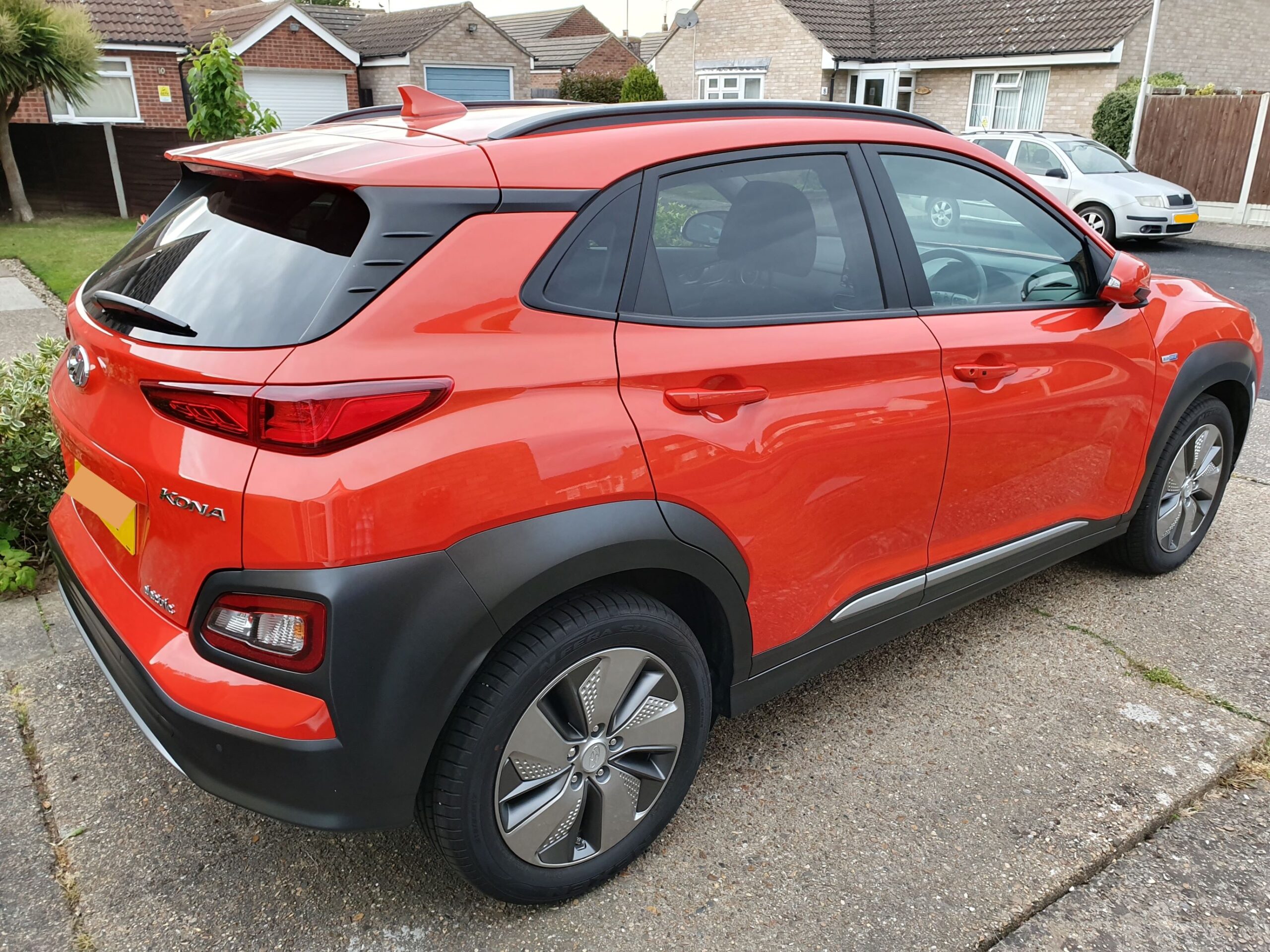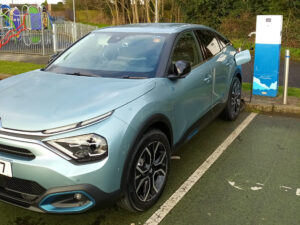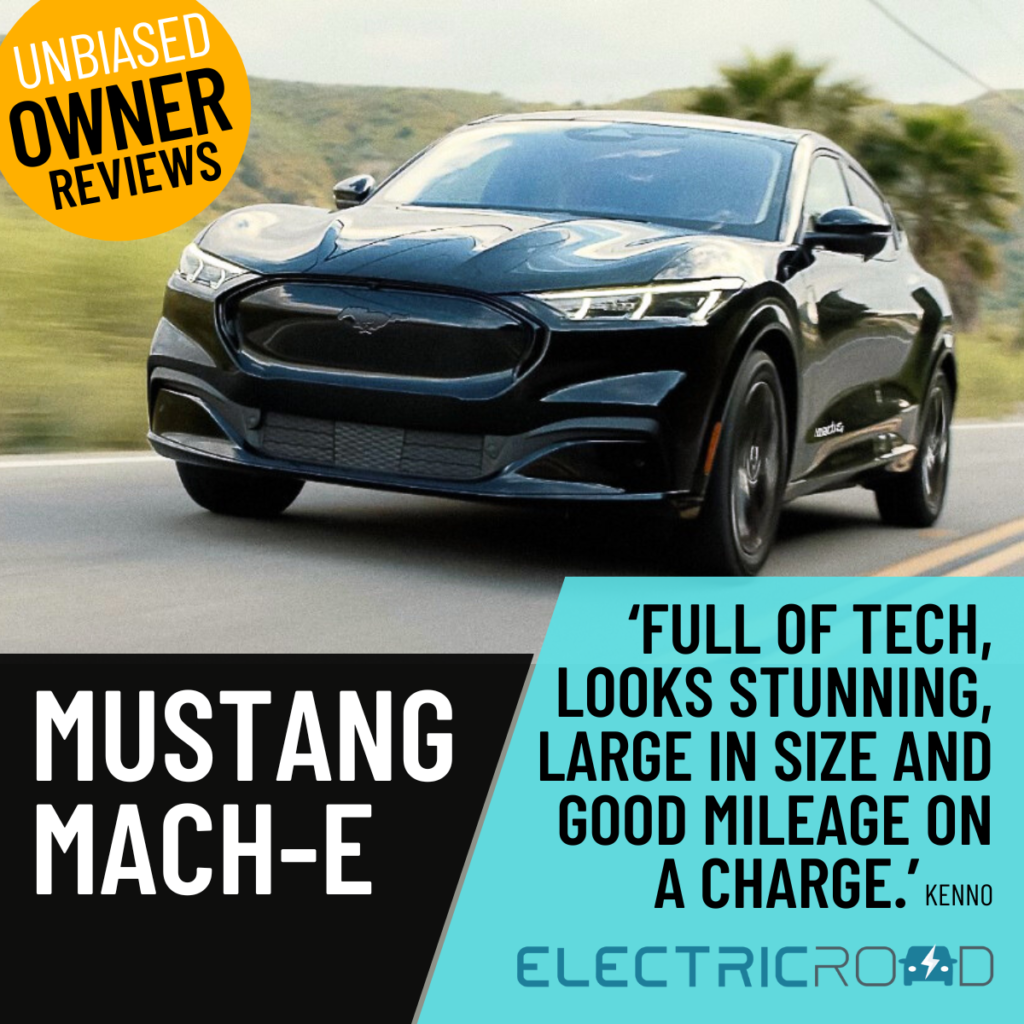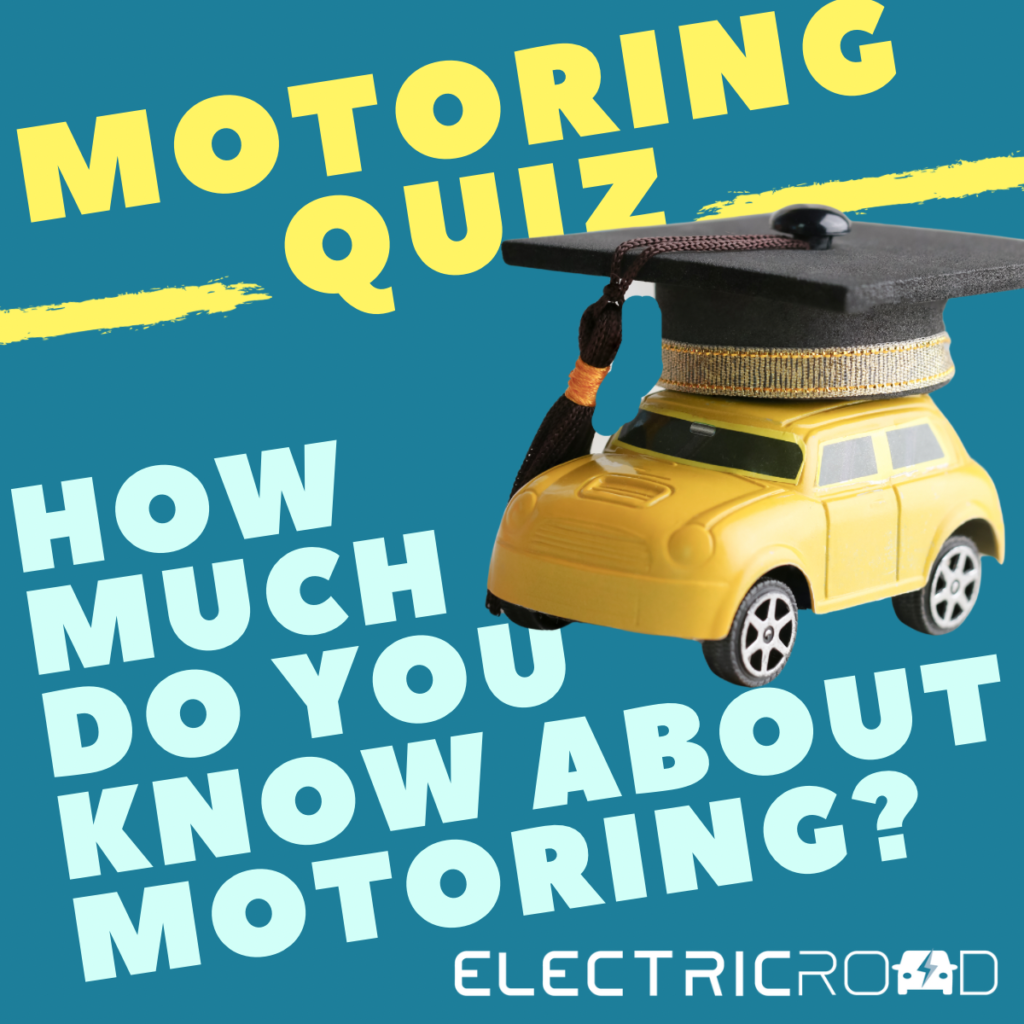Chris Allen drives a Hyundai Kona Electric 64kWh 2018.
This is Chris’s first electric car, he’s owned the Hyundai Kona Electric 4-5 years and drives 5,000-10,000 miles annually. The current mileage of the car is between 30,000-40,000 miles and he achieves 240 miles from a full charge.
Why did you choose the Hyundai Kona Electric?
When it came out, there wasn’t much to choose from. Apart from Tesla, it was by far the most advanced EV and had the best potential range when compared to the Nissan LEAF and the Renault Zoe.
It has more than enough power, is a joy to drive and is packed with safety features and driving aids. The range is obviously dependant on many factors, as it is for all EVs; hammer it on the motorway in the cold and wet of winter and you’re looking at not much above 200 miles but with the right weather, temperature and driving style, over 300 miles is possible and I have achieved that.
The first 5 years of ownership have been virtually trouble-free and inexpensive and I have no intention of even considering changing it for any other. I plan on keeping it for many years.
Positives – List 3 or more reasons why you love this electric car
- The tech features
- the range
- the power.
Negatives – List 3 or more things that you really don’t like about this electric car
- There is honestly nothing I don’t really like about this car.
Have you experienced any faults with the car? If so, what have they been?
A couple of years ago, a potential fault was discovered relating to the main traction battery pack, which had resulted in a few cars (only in South Korea I believe), catching fire during charging.
Hyundai decided to replace the battery pack on all Kona EVs worldwide, which had the same battery (LG Chem manufacture). Mine was replaced in 2021 with a new battery pack from a different manufacturer. It has been absolutely fine since then and I now have a pack which will give me extra years’ of service.
What are the standout technological features of the car?
Stand out technical features include:
- Head-up display
- Smart cruise control
- Lane keep assist
- Lane follow assist
- Forward collision avoidance with automatic emergency braking
- Blind spot warning for overtaking/changing lanes
- Rear collision warning for reversing out of a parking space
- Rear reversing camera
- All round parking sensors.

Surprise us! Tell us something people wouldn’t readily know about this electric car
The power output for a car this compact and unassuming can surprise some ‘boy racers’ and is very useful when joining a motorway for example.
The Head-up display is great, it tells you all you need to know most of the time, meaning less time looking away from the road.
The Smart Cruise Control is a major aid as it monitors the road ahead with radar and cameras, it adjusts your speed to keep a safe stopping distance from the vehicle in front and you do not need to operate the accelerator, which is especially useful in traffic jams.
Also the car will generally keep itself within the lane, if it is clearly marked. You can let go of the steering wheel and it will steer itself, although it will sound a warning if it doesn’t detect you moving the wheel within a few seconds. Not holding the steering wheel isn’t safe. The car is not capable of advanced ‘autonomous driving’ and will disengage all cruise control assistance if you ignore the warnings.
Are you seriously considering your first or next EV? Then visit Electric Road’s CAR FINDER to get the right car for you!
What electric car(s) are you interested in next and why?
There are many more EVs available now since I bought mine 5 years ago, many of which I would be happy to own, mostly due to their faster charging capabilities. However, mine is so good and suits me so well, that I don’t expect I will ever buy another.
Home charging unit – outline both positive & negative elements
I have a Pod Point home charging unit. It suits me, isn’t smart and just does what I want. I can control the charge rate if necessary, between 4.1kW and 7kW, from the controls in my car.
The only positive point really, is reliability. The negative point is it doesn’t have the ability to integrate with my home solar system and automatically charge the car purely from excess solar. This I have to do using the portable (granny) charger supplied with the car, which is fine for the odd occasion we actually get any sustained sunshine in this country.
Electricity supplier & tariff – outline both positive & negative elements
I’m with Octopus. They seem to be the best and most innovative supplier, with many tariffs to suit a diverse range of customers requirements and situations.
I am on their Go tariff, which gives a 4 hour window of very cheap electricity between 12.30am and 4.30am, during which time I use the most energy – charging the car, running the dishwasher, washing machine & even showering (10kW shower). I am a night owl, so all this is done during my waking ‘day’ and suits me perfectly! It doesn’t bother me that the day units are much more expensive, as my solar and home batteries power the house during the day.
I don’t really have anything negative to say about Octopus.
What public charging networks would you recommend to others and why?
I hardly ever use public charging, as most of my driving is local and is covered by home charging. When I’ve had to charge ‘on the road’, I favour bp pulse (formerly Polar), as I have a subscription which reduces the rate per kWh. I don’t really have any experience of other providers. I’ll probably cancel that subscription soon as I don’t charge often enough to justify the monthly cost.
Insurer – outline both positive & negative elements
I currently insure my car with LV. They have become very expensive and so I tend to shop around every year now and will probably change insurer this year. I have no feelings of loyalty to any one insurer, as they have none for the customer. I consider them as a necessary evil I’m afraid.
Please itemise where you’re saving money (or not) owning & running a Hyundai Kona Electric
After the initial expense of purchasing an EV, I have undoubtedly saved a substantial sum over the years. No road tax (until 2025) is a welcome saving, as is no charge within emission zones, if relevant. Servicing is cheaper, as there are very few moving parts and servicing takes less time. Insurance costs I believe are similar to petrol/diesel cars.
I now charge mostly at night (at home) for 7.5p per kWh, which gives me 28kWh for £2.10. At my average of 4.4 miles per kWh = 123 miles or £4.80 for potentially 281 miles with a fully charged 64kWh battery.
Having not driven an ICE car for so long, I am not familiar with the comparative costs of those for petrol/diesel cars, however my figures are clearly a significant saving and go some way to balance the initial higher purchase price.
See other Hyundai Kona Electric Owner Reviews here











